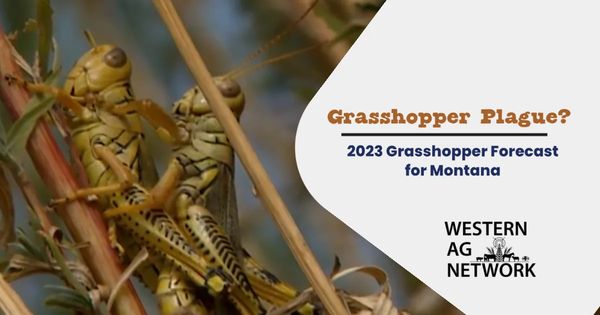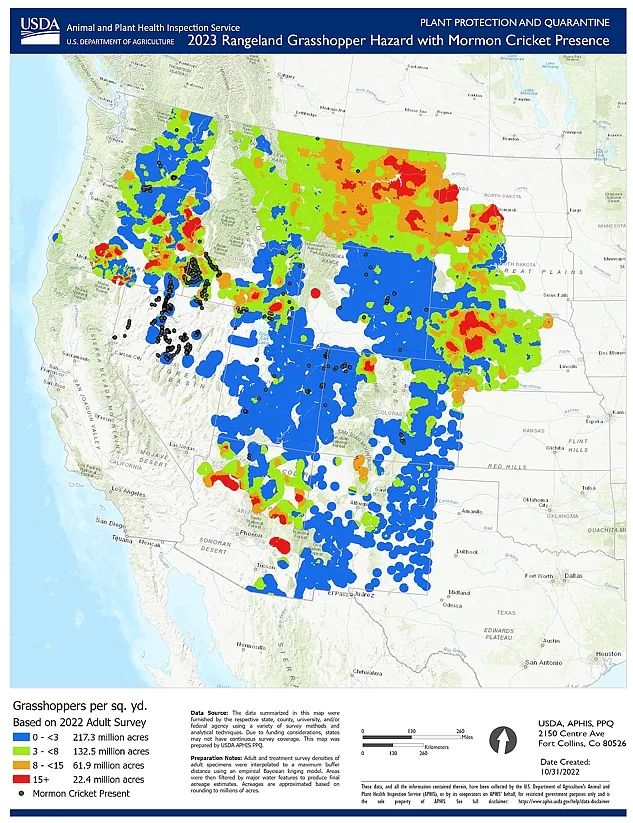.png?fit=outside&w=1200&h=630)
Another Grasshopper Plague? 2023 Forecast
May 11, 2023
Grasshoppers have plagued parts of Montana and surrounding states for multiple years in a row. Bringing destruction in their wake for farmers and ranchers. What is in store for summer 2023?
Gary D. Adams, USDA APHIS State Plant Health Director for Montana, said USDA's grasshopper survey completed last year points to another year of grasshoppers.
"It still looks like we have a pretty significant amount of grasshoppers throughout Montana," said Gary Adams. "It kind of moves around where they're bad. A few years ago, they were in different places and some places it's the same. I would say that there is a significant potential for there to be continued grasshopper populations in 2023."
WATCH: Gary Adams and Lane Nordlund Discuss the forecast for grasshoppers in Montana.
That's not the news many expected, especially with this winter's sub-zero temperatures.
"Some people are going to say we had a cold winter and a lot of snow," said Adams. "My answer to that is that grasshoppers have been around way longer than we have and they're used to Montana winters. Snowpack and snow cover are really just an insulator. I don't think you should expect that the winter had a significant impact on eggs because they're pretty tough. "
Adams said early scouting for grasshoppers is important.
"The trick is really to get out there in the spring and in June and monitor what's happening early," said Adams. "You don't want to wait until grasshoppers are laying eggs if you want to manage them. You need to do it in a timely manner and not wait until it's too late. Once they're laying eggs, it's my opinion, it's pretty tough to manage them at that point."

If an outbreak occurs, by request, USDA APHIS will work with landowners to apply chemical controls to rangelands. That's only if funding is available.
"If there's an area of rangelands (the program only covers rangeland) of 10,000 acres or more then you should just call me," said Adams. "We'll try to have a meeting or discussion with you and your neighbors to try to figure out if the program will work for you. If the funding's available and we can get a program together and it meets the requirements then we will pay one-third of the total cost of the treatment of private acres."
For ranchers who also have federal land grazing allotments, those federal agencies must also make a request to USDA APHIS for grasshopper management enrollment.
With federal funding always an issue, many landowners do choose to pay for chemical applications out of their own pockets to protect their rangeland to try and prevent a reinfestation of grasshoppers.
Landowners are also encouraged to contact their local county extension office for more educational resources.
Contact information:
Gary D. Adams
State Plant Health Director-Montana
(406) 657-6282
(406) 431-6531 (Cell)
Source: Western Ag Network










